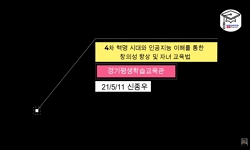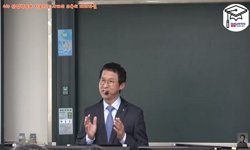In a situation where the industrial application of artificial intelligence technology is currently underway under the name of the ‘4th Industrial Revolution’, this paper aims to present the significance of activities to learn the history of comput...
http://chineseinput.net/에서 pinyin(병음)방식으로 중국어를 변환할 수 있습니다.
변환된 중국어를 복사하여 사용하시면 됩니다.
- 中文 을 입력하시려면 zhongwen을 입력하시고 space를누르시면됩니다.
- 北京 을 입력하시려면 beijing을 입력하시고 space를 누르시면 됩니다.

컴퓨터-인공지능의 역사 학습의 의의와 교수학습방안1) = The Significance and Teaching & Learning Methods of ‘History of Computer-Artificial Intelligence’ Learning
한글로보기부가정보
다국어 초록 (Multilingual Abstract)
The essence of social and historical education lies in reflecting on the entire reality, including the material demands, rather than responding to the material demands of reality. In a reality where the ‘4th Industrial Revolution’ is expected to go beyond simply influencing the prospects of individual jobs, it is judged that chronological learning on the social context of scientific and technological achievements such as the history of computer-artificial intelligence can have a close relationship with such essential aspects beyond securing background knowledge. This is especially true in that it more systematically implements the awareness of scientific issues pursued by STS education. In that case, learning about the history of computer-artificial intelligence will also secure the meaning of allowing students, who are the masters of the future society and potential citizens, to reflect on the process or context in which the reality surrounding their daily lives was formed.
In a situation where the industrial application of artificial intelligence technology is currently underway under the name of the ‘4th Industrial Revolution’, this paper aims to present the significance of activities to learn the history of computers and artificial intelligence and how teaching and learning methods can be designed. To this end, the history of computer and artificial intelligence technology was first outlined in two chapters, and the important turning points where technological progress occurred and the historical circumstances that served as the background for such advancements were exam ined. Next, the question o f ‘why t o teach’, that i s, the s ignificance of a ctivities to l earn t he history of computers and artificial intelligence, was discussed in relation to previous studies that sought educational methods for the history of science and technology and the history of changes in specific subjects. Thus, finally, a 4th period history curriculum consisting of 3rd period ‘line of development’ learning and 1st period re-enactment learning based on the premise of cross-curricular teaching and learning activities was organized, and examples of teaching and learning materials for ‘line of development’ learning and re-enactment learning were presented. In this process, ‘line of development’ learning was used to outline the entire history of computer-artificial intelligence, and re-enactment learning was used to individualize learning experiences mediated by career paths.
The essence of social and historical education lies in reflecting on the entire reality, including the material demands, rather than responding to the material demands of reality. In a reality where the ‘4th Industrial Revolution’ is expected to go beyond simply influencing the prospects of individual jobs, it is judged that chronological learning on the social context of scientific and technological achievements such as the history of computer-artificial intelligence can have a close relationship with such essential aspects beyond securing background knowledge. This is especially true in that it more systematically implements the awareness of scientific issues pursued by STS education. In that case, learning about the history of computer-artificial intelligence will also secure the meaning of allowing students, who are the masters of the future society and potential citizens, to reflect on the process or context in which the reality surrounding their daily lives was formed.
동일학술지(권/호) 다른 논문
-
2022 개정 사회과 교육과정과 중학교 사회 교과서에 나타난 공감 관련 내용 분석
- 한국사회과교육연구학회
- 조경철
- 2025
- KCI등재
-
- 한국사회과교육연구학회
- 문경호
- 2025
- KCI등재
-
막스 베버의 이상형(Idealtype)을 적용한 개념학습 방안 연: 구고등학교 동아시아사의 17~18세기 사회적 특징의 수업 사례를 중심으로
- 한국사회과교육연구학회
- 안운호
- 2025
- KCI등재
-
다문화 사회 교사교육과 안전한 공간(Safe Space)의 이중성: 예비교사의 성소수자 인권 수업 실천 경험에 관한 사례연구1)
- 한국사회과교육연구학회
- 차보은
- 2025
- KCI등재
분석정보
연관 공개강의(KOCW)
-

[제18회 김옥길기념강좌] 인공지능, 감정, 휴머니즘(Human-Compatible Artificial Intelligence’)’
이화여자대학교 스튜어드 러셀 -

4차 산업혁명과 인공지능 시대, 창의성 향상 및 자녀 교육법
신한대학교 신종우 -

4차 산업혁명과 인공지능 시대의 교육 패러다임
신한대학교 신종우 -

누구나 할 수 있는 데이터 분석과 인공지능[Data Analysis and Artificial Intelligence for Everyone]
K-MOOC 인하공업전문대학 이세훈 -

누구나 할 수 있는 데이터 분석과 인공지능[Data Analysis and Artificial Intelligence for Everyone]
K-MOOC 인하공업전문대학 이세훈




 스콜라
스콜라

